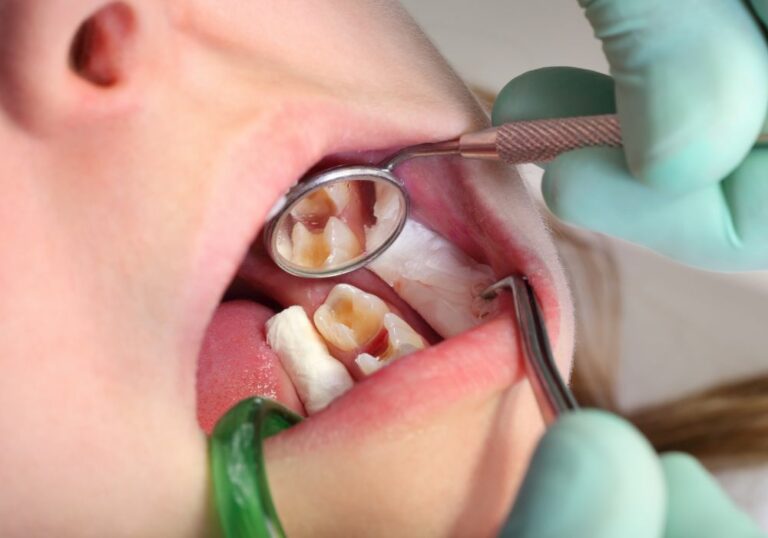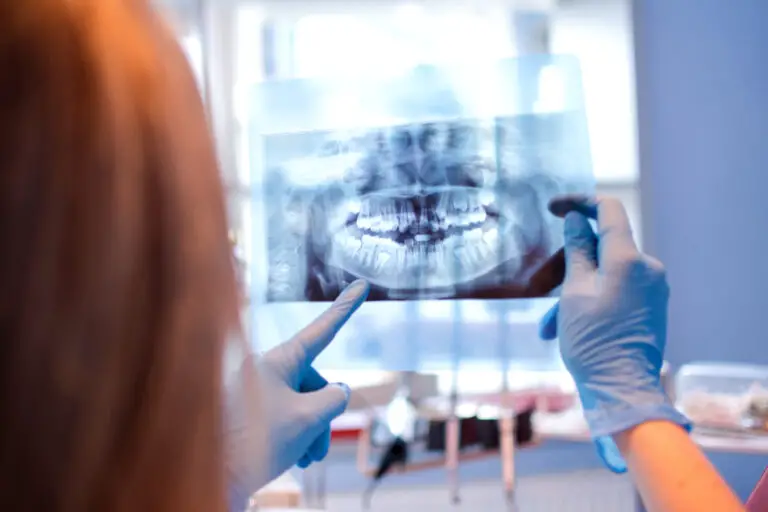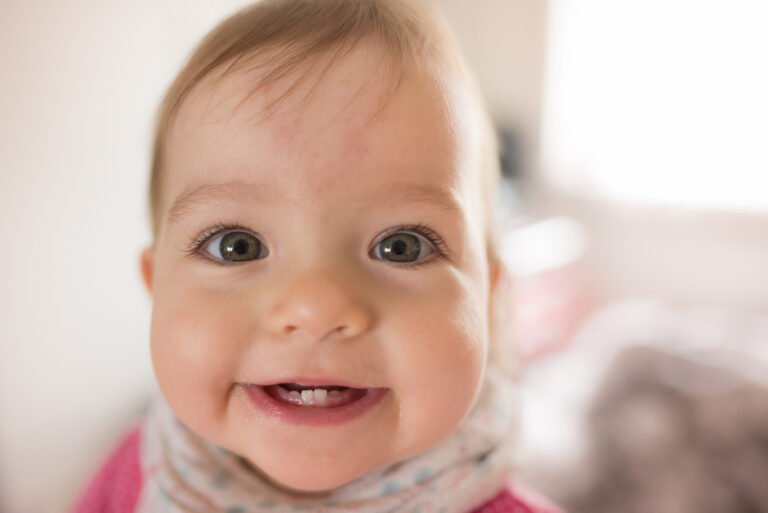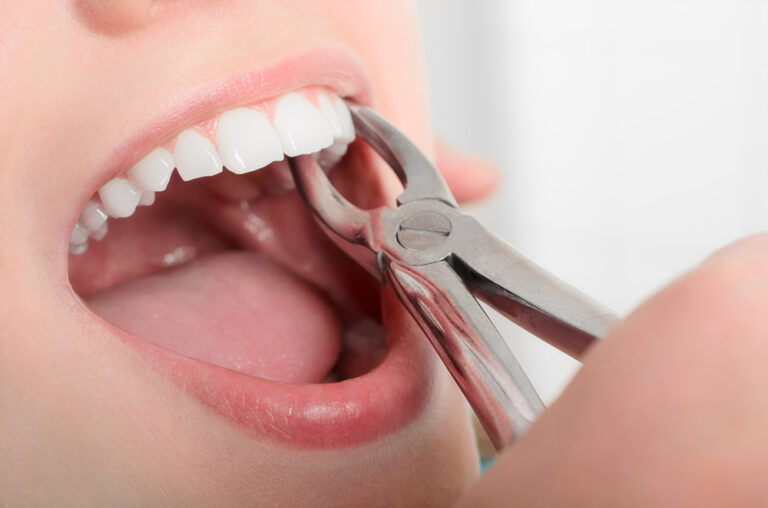Teeth falling out can be an exciting, yet anxious time. While it’s a journey we all go through as children, you may be wondering if your child’s teeth are falling out too soon or in the wrong order. We’re here to answer all your questions.
Baby teeth usually start to fall out around the age of five or six but this can change from one child to the next. We’ll answer the question of exactly when do baby teeth fall out and give you other important facts. Read on to find out all about baby teeth!
When Do Baby Teeth Fall Out?
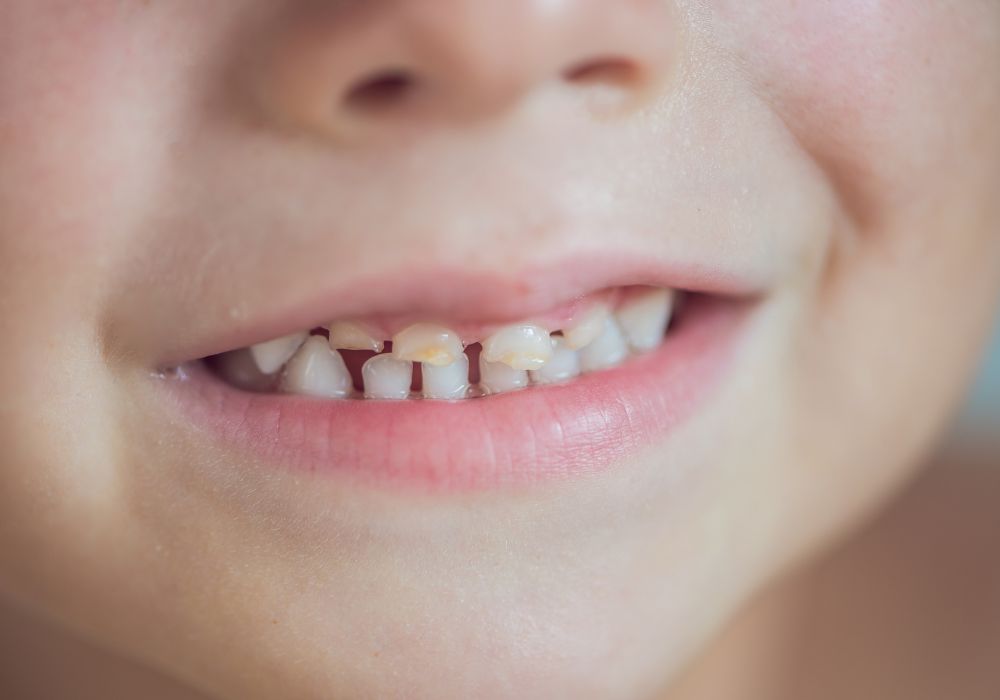
Once babies are born into the world, they already have 20 little teeth that look like mini versions of our set. They’re called primary teeth, deciduous teeth, or simply “baby teeth” and push through the gums until they are all showing at around two and a half years old.
There is no fixed age for when these teeth will fall out, but you can expect them to start going between 5 and 6 years old, up until around 12 to 14 years old. Once these teeth are out, new ones will start growing to fill the empty spaces, replacing them with new permanent teeth.
However, if the primary teeth, for whatever reason, do not fall out on their own, it’s best to visit a dentist to have these extracted.
Remember, adult teeth are much stronger compared to baby teeth; plus, they also grow slower. That means it will take longer for them to erupt and push through the gums to become visible.
What Age Should We Expect Their Teeth to Fall Out?
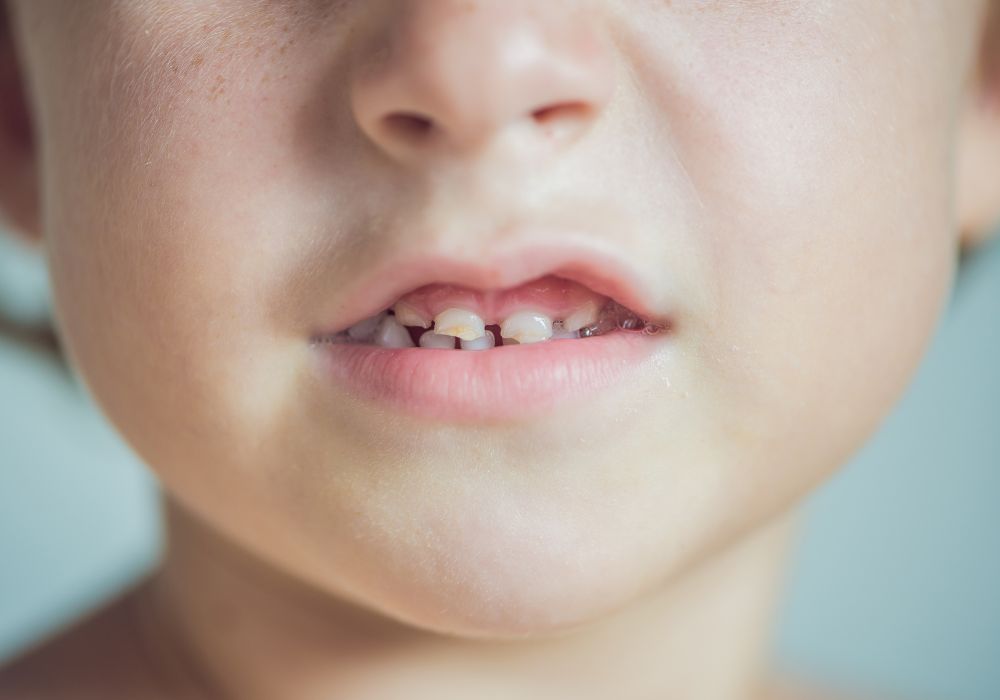
Most babies start to receive their first set of teeth around three months old. However, this isn’t always the case since some babies as young as four weeks after birth start getting their teeth. There are also others who get them when they’re already five to six months old.
Children usually start losing their baby teeth at 5 or 6 years of age. However, some have to wait until they reach 7 years old. At this point, their teeth start getting loose to eventually make space for the permanent teeth that will pop out.
While not always the case, there is a common order that teeth fall out, which is as follows:
1. Central Incisors
These are usually the first teeth to appear on your child, and with that, they’re also the first ones to fall off. When the lower ones start coming loose, the upper central incisors will start showing themselves. You can expect this to start happening when your child reaches 6 years old.
2. Lateral Incisors
These are the next set of teeth to appear, which means they’re also the next ones to loosen. Typically, the top lateral incisors will fall first, followed by the lower ones. These incisors are often lost between the ages of six and seven.
3. First Molars
For some children, these teeth can be a bit painful when coming in. However, this isn’t the case when they start falling out. The primary or first molars aren’t usually painful when they get replaced. These start shedding when your child reaches the age of 9 to 11.
4. Second Molars and Canines
Out of all your children’s teeth, these are the last ones to fall out. Canines are lost when your child reaches 9 to 12 years old, while the secondary molars are shed between the ages of 10 and 12. Once your child reaches 13 years old, they should already have a nice full set of permanent adult teeth.
It’s important to note that there aren’t any fixed rules about how long each of these stages last. When you take your child to the dentist, they can tell if your little one has missing teeth or if any of these are crowded.
Why Do We Have Two Sets of Teeth?
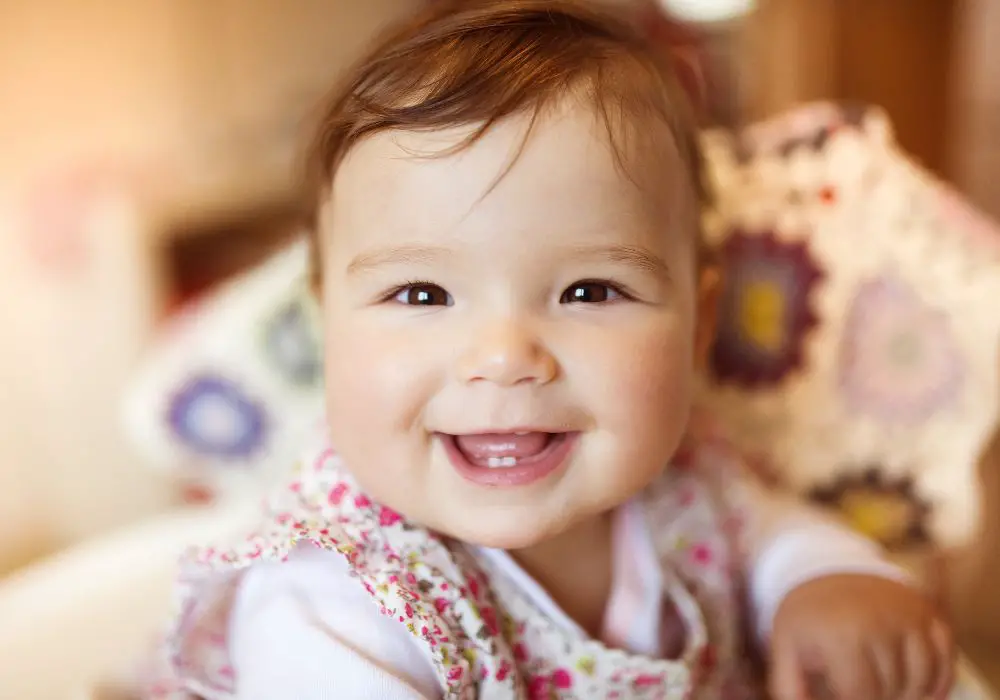
Baby teeth fall out because their main role is to act as placeholders to create adequate space in the jaws for the incoming permanent teeth. As we mentioned earlier, most kids start losing their baby teeth by the age of 6. But of course, these don’t all fall out at the same time, so don’t worry!
When a permanent tooth readies itself to erupt, the roots of a baby tooth will start dissolving until it’s completely gone. At this point, the tooth is just loose, held in its spot by the gum tissues surrounding it.
Problems with Baby Teeth
Even if baby teeth are just temporary, it’s still crucial to keep them healthy and away from any possible issues. Remember, these can affect the development of your child’s oral health if you don’t take action to solve any issues. Some of the common baby teeth problems include premature decay, cavities, and necrosis.
1. Toddler Tooth Decay
Cavities are one of the most common problems related to baby teeth of toddlers, and here are the usual causes of it:
- Prolonged use of bottles
- Transmission of cavity-causing bacteria
- Poor feeding
- A lack of oral hygiene
2. Premature Loss of Primary Teeth
Losing primary teeth prematurely can be due to several reasons. These include tooth decay, weak roots, an unbalanced diet with inadequate amounts of calcium, and trauma to the mouth.
When There’s a Loose Tooth, What Should Parents Do?
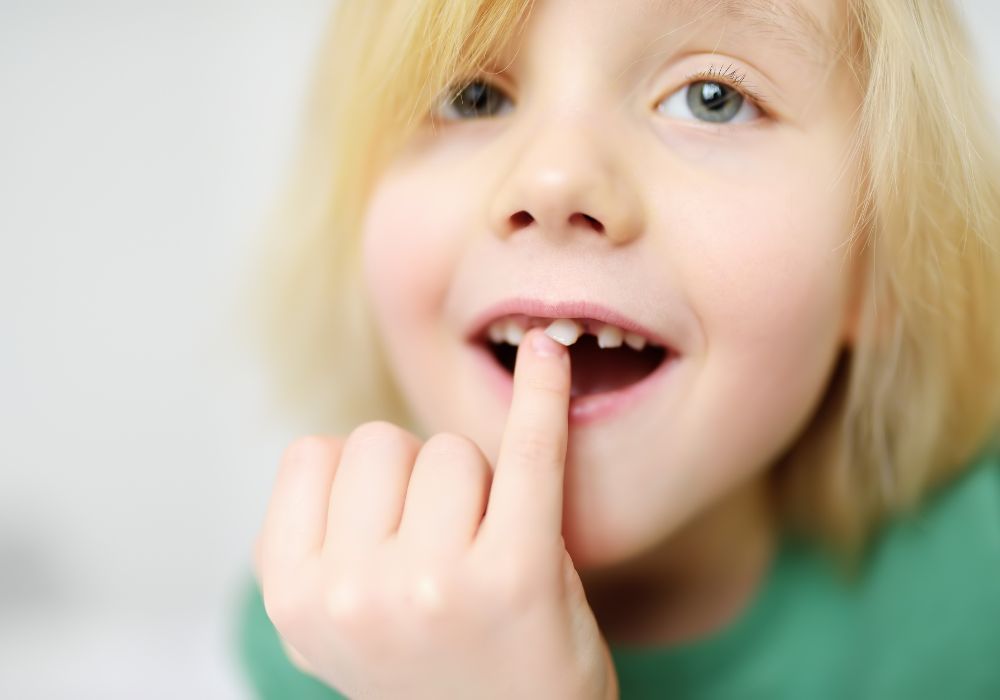
Generally, losing baby teeth can be an exciting milestone for a child. This is especially true if they’ve been introduced to the idea of the tooth fairy. However, it could also be an upsetting situation for some since a few children believe that their “permanent” teeth are gone.
If you notice a loose tooth on your child, calmly explain the situation, especially if it’s their first time losing teeth.
The sensation of losing their teeth is a foreign feeling to your children. They may want to avoid brushing along the area, but it isn’t recommended. Remember, proper dental care and oral hygiene are essential to prevent instances of inflammation and irritation to the gum tissues. Aside from that, proper dental hygiene prevents tooth decay.
Of course, ensure they aren’t vigorously brushing the tooth or the gap left by the baby tooth. It’s also okay to wiggle it with a clean finger. Pulling it out or contacting your dentist isn’t necessary unless your child is feeling pain or discomfort. But most often, these will eventually fall out on their own, and your child just needs to wait.
Caring for Children’s Baby Teeth
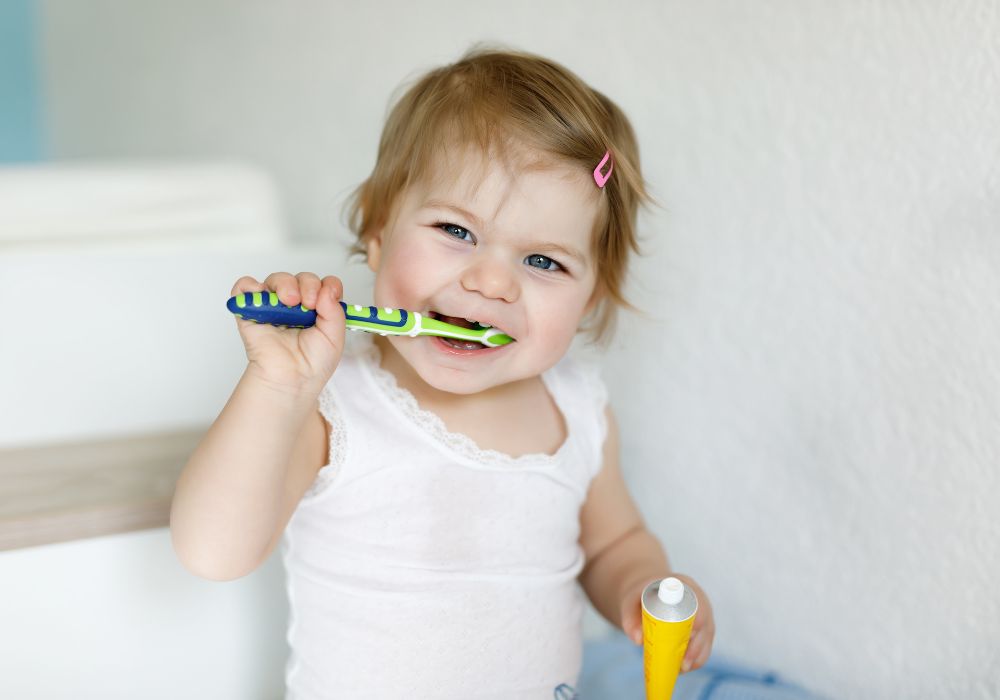
Even if your child still has baby teeth, it’s critical to look after these to ensure that the adult teeth to come will be healthy. To help care for your child’s baby teeth, here are a few ways to protect their smile:
1. Brush their Teeth Twice a Day and Use a Good Fluoride Toothpaste
As soon as you see your child’s teeth appearing, get them used to brushing their teeth twice a day. One brushing would be at night before they go to bed, and the other, of course, once they wake up.
Make sure to use a small and soft toothbrush for your child. Then, smear a pea-sized amount of fluoride toothpaste before they start brushing. Keep in mind that this amount is ideal for children aged six and over.
2. Have Regular Visits to the Dentist
In certain areas, a child can take advantage of the free check-ups from your dentist/oral health service. So as soon as you can, enroll your little one in the service so you can arrange their first dental checkup.
Remember, regular visits to the dentist can help you find and treat any tooth problems early. From there, your dentist will be able to tell you how often your little one needs to have a visit.
3. Give Them Healthy Food and Drinks Without Too Much Sugar Content
The only thing you should put in your babies’ bottles or sipper cups is water and milk. That’s it. Also, it’s best to avoid putting your child in bed with a bottle. Why? Because going to sleep drinking milk, warm chocolate, or even juice, can lead to tooth decay.
If they need to suck on something to settle in bed and sleep, it’s best to use a pacifier without any sweeteners.
Remember, sweet drinks, fruit juices, and other sweet food can damage their teeth at a young age. Plus, your little one might develop a taste for sweet treats. As they get older, you can continue protecting their teeth by giving them sugar-free snacks. Let them enjoy fresh vegetables or fruit between meals for snacking.
Conclusion
There is no exact age when a child’s teeth start falling out, but for the vast majority of children, their front teeth will start to fall out around the ages of five or six. Over the next six to eight years, they will gradually lose the rest of their teeth until all 20 are gone.
The larger jaw of a teenager can then accommodate 28 new adult teeth until they are joined by four wisdom teeth around 5 to 10 years later. By our mid-20s, we’ll be left with the 32 adult teeth we have for the rest of our lives, unless we lose one of course!


